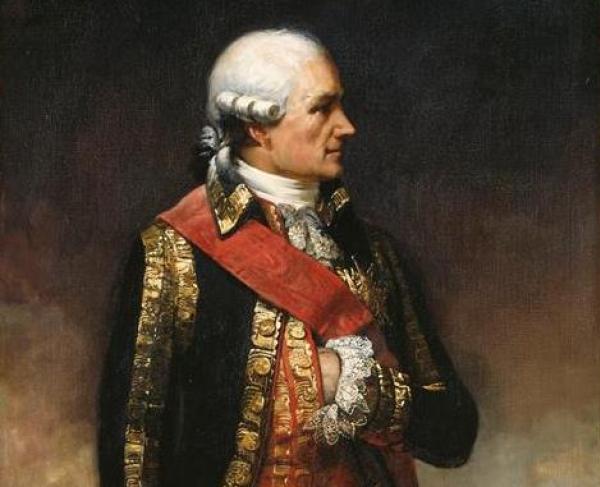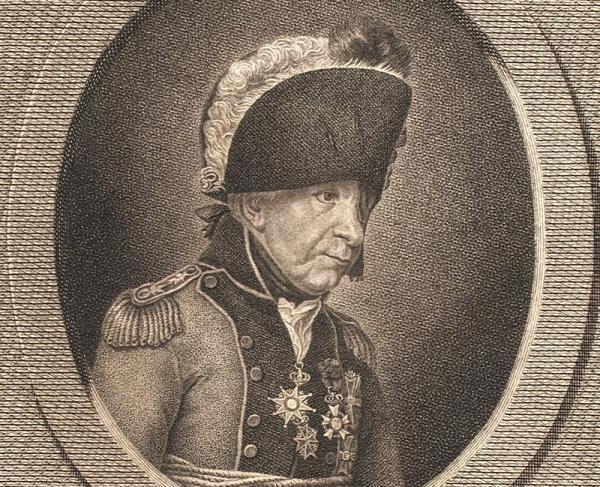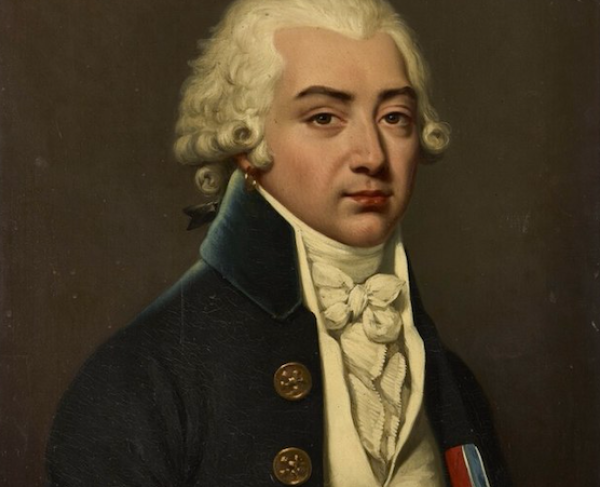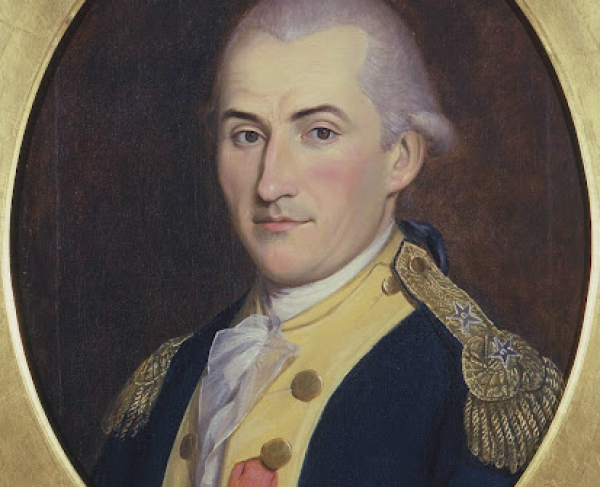Rochambeau

French nobleman and career military officer Jean-Baptiste Donatien de Vimeur, comte de Rochambeau lived into his 80s, a miraculous accomplishment considering his many brushes with death on and off the battlefield, including an unwanted courtship with the guillotine during the Reign of Terror in the French Revolution.
However, none of Rochambeau’s exploits had a greater impact on world history than his role in the American Revolution, when he brought some 5,500 French troops to America in 1780 to join the Continental Army and fight alongside Gen. George Washington to win freedom from British rule for the thirteen American colonies.
Together, Washington and Rochambeau marched their combined force south to Virginia in 1781 and trapped British Gen. Charles Cornwallis and 8,000 British troops at Yorktown, forcing their surrender. It was a crushing defeat for the British army, leading to the end of the war.
A week before the surrender, Washington wrote to Congress: “I cannot but acknowledge the infinite obligations I am under to His Excellency, the Count de Rochambeau” and all of the French officers “for the assistance in which they afford me.”
Born in 1725, Rochambeau first saw combat during the War of the Austrian Succession (1740-48) and was wounded in the Battle of Lauffeld. Rochambeau gained such a distinguished record, he was promoted to colonel in 1747 and given command of a regiment at age 22. He served in the Minocan campaign in 1756 and, after being promoted to general, served in the Seven Year’s War, again suffering battle wounds.
Although the Marquis de Lafayette is better known for his distinguished service in the Continental Army, Rochambeau was the commander-in-chief of the French expeditionary force of 5,500 troops that King Louis XVI sent to America in 1780 to support France’s new alliance with the former colonies.
When Cornwallis moved his British army into Virginia and took up a defensive position at Yorktown in 1781, a French fleet was on its way to America to help the land forces.
Seizing the opportunity to try to trap Cornwallis, Washington and Rochambeau, with stealth and speed, moved 12,000 soldiers to Virginia. “The greatest harmony prevails between the two armies. They seem actuated by one spirit,” Washington reported to Congress. In Virginia, Rochambeau visited Mount Vernon, joining Washington for his first visit to the Potomac River estate since 1775.
Rochambeau was subordinate to Continental Army Commander Gen. George Washington, but the two quickly developed great mutual respect and admiration, establishing an effective partnership.
After the French fleet defeated the British naval force at Yorktown, Rochambeau oversaw the month-long Siege of Yorktown, forcing the surrender of Cornwallis and his forces on Oct. 19, 1781.
In a farewell letter to Rochambeau, Washington wrote “of the happiness I have enjoyed in our private friendship. The remembrance of which will be one of the most pleasing Circumstances of my life.” Rochambeau, in reply, promised Washington his “most inviolable personal attachment & respect.”
When the French Revolution began in 1789, Rochambeau was loyal to King Louis XVI, who was executed by the revolutionaries. Rochambeau was arrested and imprisoned in Paris during the Reign of Terror, but the old general’s date with the guillotine was cancelled when revolution leader Maximilien Robespierre was guillotined instead in 1794, ending that bloody episode of French history. When Napoleon came to power in 1799, he pardoned Rochambeau, who retired to his estate, where he resided until his death in 1807 at the age of 81.
Lafayette’s celebrated return to the United States in 1824 secured his legacy as the most famous and popular French military leader in the American Revolution. However, in Lafayette Square, across from the White House, two monuments honor the French contribution to America’s war for Independence: one is for Lafayette, the other is for Rochambeau.
Related Battles
389
8,589


